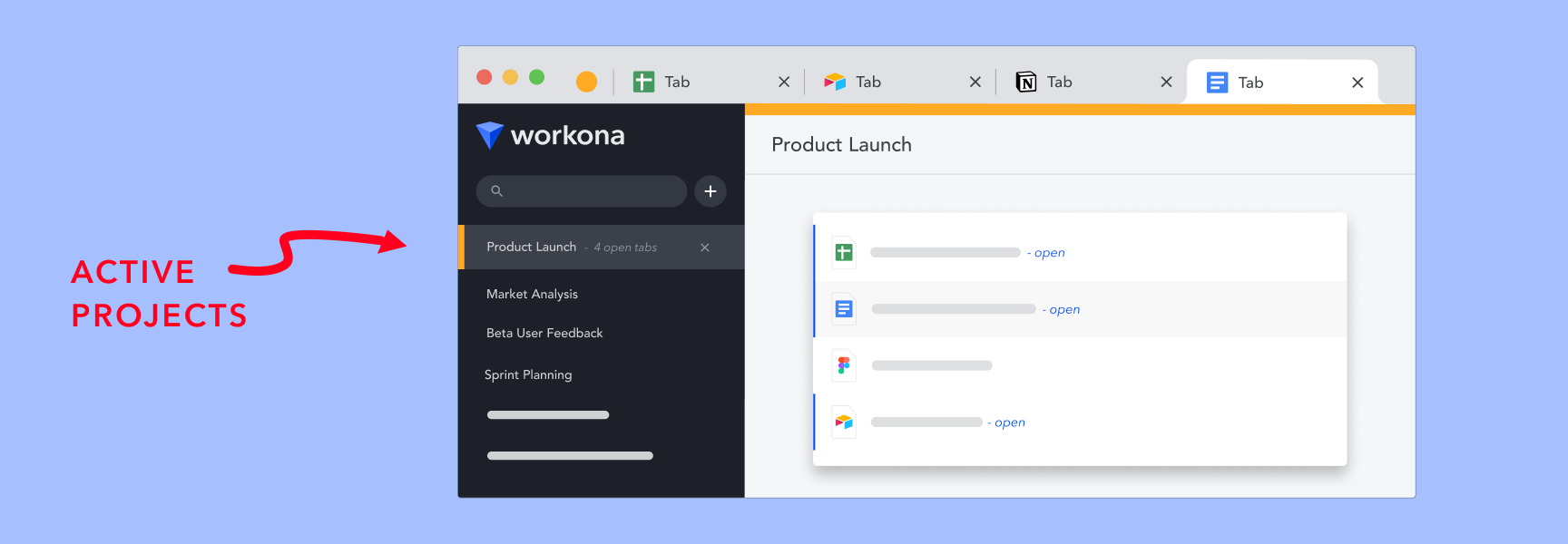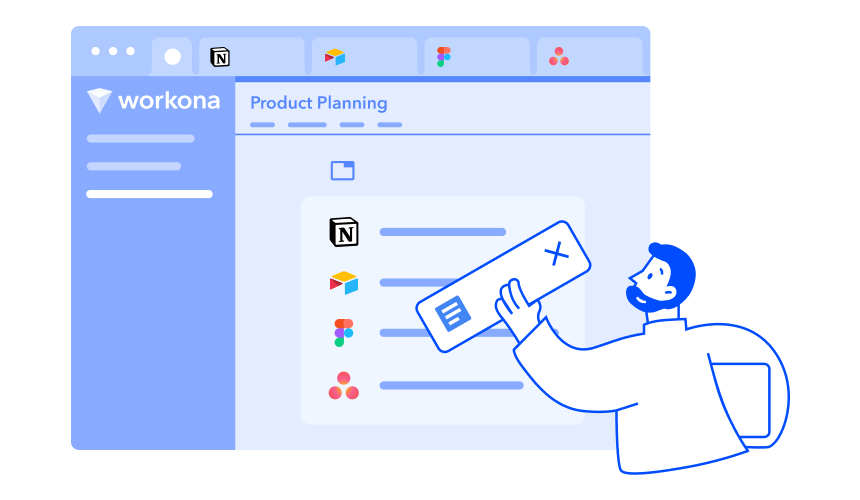
Why Digital Workspaces Are Essential for Remote Work
Did you know that in early 2021, more people searched for the term “digital workspace” than ever before?

It’s easy to write this off. After all, the high point represents less than 100 searches. But at Workona, we predict that it's just the beginning — that digital workspaces will become a must-have tool, especially for remote and hybrid workers.
Just look at Elaine Zelby’s enormous market map of remote work tools that are rising in popularity. It includes dozens of tools that could be considered digital or virtual workspaces, including Workona.
Let’s dig into why digital workspaces are growing in popularity — and what it means for remote workers.
Digital workspace definition & benefits
Digital workspaces are on the rise because we have too much of a good thing: work in the cloud. On average, knowledge workers switch between 10 apps 25 times per day.
But even beyond cloud apps, there’s an overwhelming amount of information to keep track of:
- Notes stored in different places
- To-dos floating around your brain
- Important links and tabs getting lost in your browser
Digital workspaces attempt to solve these problems by putting all of your work in one secure, organized space. It’s a similar concept to personal knowledge management systems, but with a greater focus on team collaboration.

Virtual workspaces should be able to accommodate every type of information:
- Cloud apps & docs
- Uploaded files
- Links & tabs (when using a virtual workspace tool like Workona)
Why digital workspaces make sense for remote work
In response to the COVID-19 pandemic, 86% of company decision-makers claim that their companies will embrace hybrid work. It's fair to assume that companies will seek out tools to support multiple workstations (or for digital nomads, a single roving workstation).
For remote workers, virtual workspaces can be just as important as a laptop or iPad. From any device or location, employees can log into the workspace and gain access to all their work.
In other words, they can work from nearly anywhere.
But like any new software trend, there are roadblocks to switching over.
Risks of digital workspaces
User privacy is a top concern for companies considering digital workspaces. If you're not comfortable with employees’ personal data being sold to third parties for advertising purposes, make sure you choose a solution that explicitly refuses to sell user data, like Workona.
At a minimum, digital workspace providers should meet these security requirements:
- Provides automatic server-side encryption
- Securely stores, backs up, searches, and transports data
- Limits access to your data — for example, Workona’s extensions don’t request access to the content of the page, which means we can’t see any of the information on the pages you visit

Benefits of digital workspaces
Depending on your role, there are a number of advantages to using digital workspaces:
-
IT managers
- Simplify employee onboarding & offboarding
- Offer a secure solution for users to manage their individual work
- Speed up users’ devices with built-in tab suspension
-
Teams
- Share team and project resources in one click
- Run better, more organized remote meetings, 1:1s, and post-mortems
-
Individuals
- Design and launch daily workflows
- Securely manage personal notes, tasks & docs
How do you organize a digital workspace?
Often, users are confused about the best way to organize their documents, links, and files in a digital workspace. They want to know which organization hierarchy or mental framework will set them up for success.
At Workona, we believe that active projects are the best way to structure work (you can read more about our reasoning here).
It’s simple: 1 project = 1 workspace. Or if you’re using a tool with another major unit of grouped work, such as Citrix Workspace’s collections, 1 of those units.

Organizing your work by project helps you move seamlessly between multiple projects without losing focus. A project-first approach also makes it easier to work on shared group projects.
That’s because structuring work by project improves productivity in several ways:
- It’s easier to recall project names, since our brains are designed to remember information in context.
- It’s easier to save resources (a well-defined project is less likely to trigger decision fatigue).
- It’s easier to use in daily workflows, as team members can quickly determine how much time to dedicate to the project.
Finding what you need.
Collaborating with teammates.
Bringing your work anywhere.
These are the features that users demand today. But what about tomorrow? Functionality that anticipates the needs of modern teams — undoubtedly powered by AI and automation — will determine which digital workspace tools come out on top.

If you’re ready to enter the world of digital workspaces, try Workona. It helps you organize everything for a project in one place: cloud docs, links, notes & tasks. With over one million workspaces created, Workona is transforming how modern work is done.